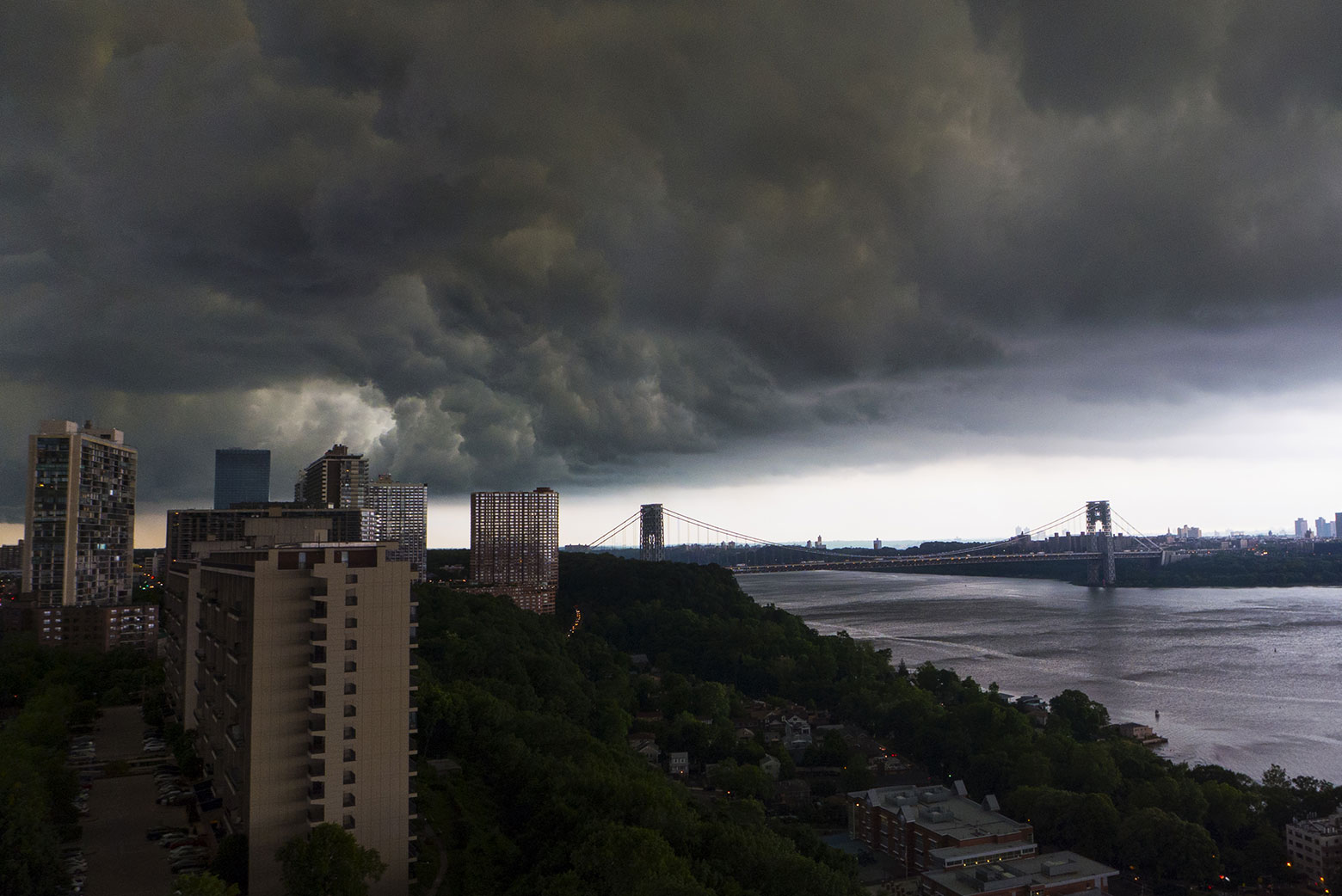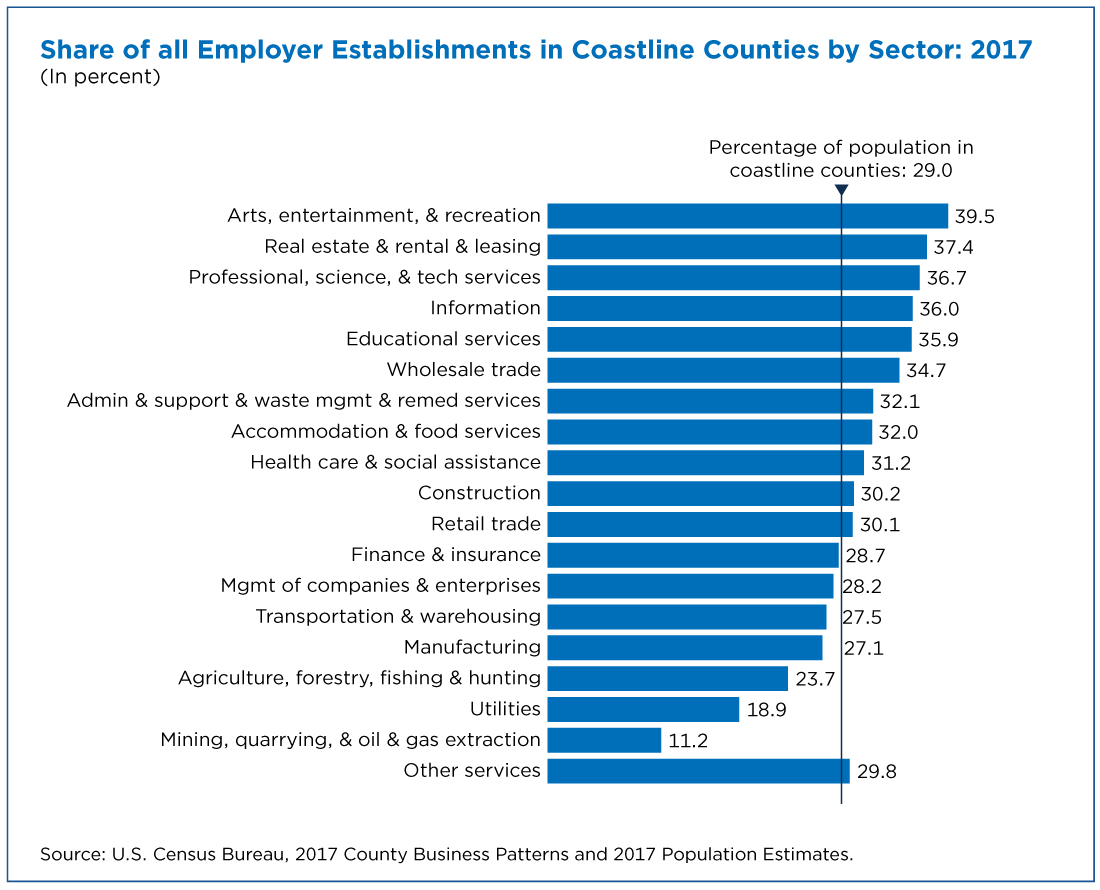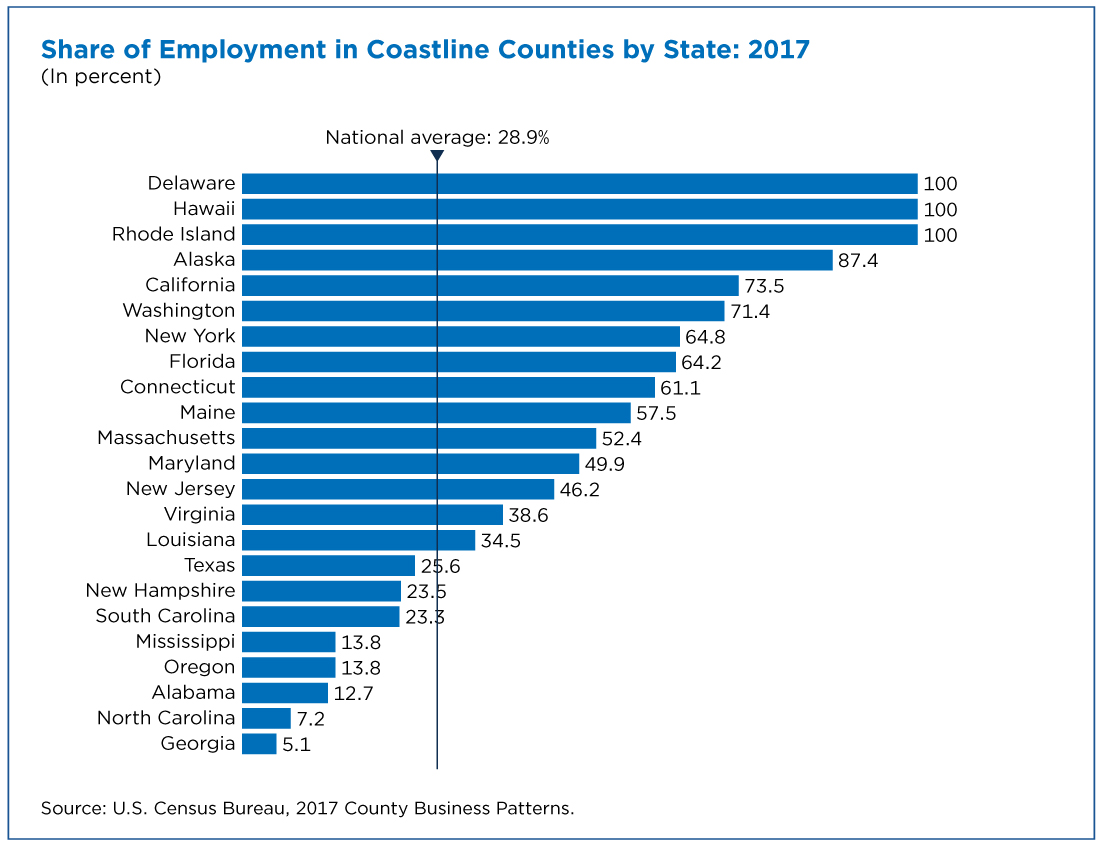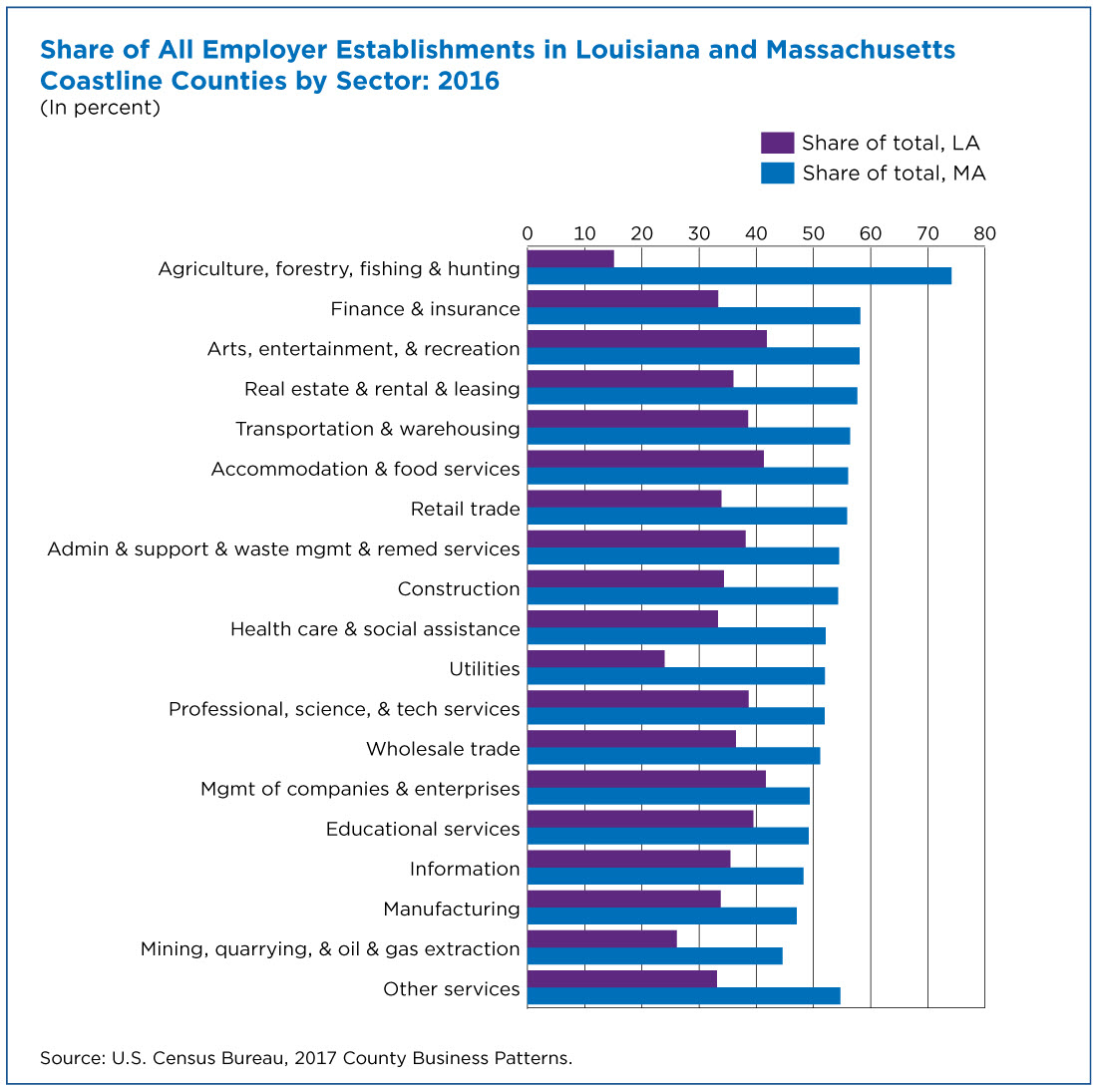About 2.4 Million Businesses Are in Areas Most Vulnerable to Hurricanes
As the 2020 hurricane season gets underway, emergency officials pay attention to the growing share (29%) of the U.S. population in the nation’s 255 coastline counties.
They’re also looking at ways to minimize the impact of a hurricane on coastline businesses that employ local residents and serve an even larger share of the regional and state economy.
Researching both the demographic and business characteristics of areas affected by a coastal event can help emergency managers respond most effectively to disasters when they occur.
Of the 7.8 million employer businesses in the United States, 2.5 million (or 31.9%) are in coastline counties. These businesses employed 37.1 million workers (28.9% of the national total), who earned $2.3 trillion in annual payroll in 2017.
While the share of all businesses in coastline counties is similar to the share of the U.S. population living in these counties, the mix of business types doesn’t always mirror the population.
The share of businesses in some North American Industry Classification System (NAICS) sectors (including Construction, Retail Trade, and Finance and Insurance) closely match the population share because local residents often are their biggest customers.
By comparison, the share of businesses in NAICS sectors such as Agriculture, Mining, and Utilities is much lower than the population share because these industries depend on farmland, mineral-rich soil or fuel sources there but serve a wider customer base.
Not surprisingly, some sectors such as Arts, Entertainment, and Recreation are even more heavily concentrated in these coastline counties because they cater to the local population as well as to tourists and visitors.
Coastline Businesses in 23 States
The way businesses are distributed in coastline areas gets even more interesting from state to state.
In the 23 states that include coastline counties, the share of jobs by industry varies widely:
- Delaware, Hawaii and Rhode Island are exclusively comprised of coastline counties, so 100% of their workforce is in coastline counties.
- Florida’s 35 coastline counties hosted 79.2% of the state’s businesses and provided 64.2% of the state’s employment.
- States like Alaska, California, New York, and Washington, which have a large number of non-coastline counties, had a much larger share of their businesses in coastline counties than inland.
This comparison gets even more interesting when you look at the share of businesses by NAICS sector in states that do not have many coastline counties. Both Louisiana and Massachusetts have a small number of coastline counties – 11 of 64 in Louisiana and eight of 14 in Massachusetts.
But the share of businesses by sector varies widely.
For some sectors (like Manufacturing and Management of Companies and Enterprises), the share of businesses in coastline counties is similar.
For others (like Agriculture, Forestry, Fishing, and Hunting), the shares are quite different. In Massachusetts, for example, fishing dominates this sector, while agriculture dominates it in Louisiana.
Researching both the demographic and business characteristics of areas affected by a coastal event can help emergency managers respond most effectively to disasters when they occur.
This information can also help them plan for potential events by conducting “what if?” exercises. Understanding the composition of businesses in these coastline counties that might need assistance during a disaster can help emergency managers prepare to respond and to help businesses reopen after an emergency has ended.
Census Bureau data and resources (including tools like OnTheMap for Emergency Management and Census Business Builder: Regional Analyst Edition) can help with this research. The high-quality data in these tools is key, and the Census Bureau appreciates American households and businesses that respond to our surveys and provide this rich data.
Andy Hait is an economist at the U.S. Census Bureau.
-
Stats for Stories2024 Atlantic Hurricane Season: June 1-November 30The U.S. Census Bureau’s OnTheMap for Emergency Management offers real-time access to data about the people living and working in areas affected by hurricanes.
-
Stats for StoriesNational Preparedness Month: September 2025Find resources on wildfires, air quality, hurricanes, extreme heat, tornadoes, floods, pandemics and more at census.gov/disasters.
Subscribe
Our email newsletter is sent out on the day we publish a story. Get an alert directly in your inbox to read, share and blog about our newest stories.
Contact our Public Information Office for media inquiries or interviews.
-
America Counts StoryNew Census COVID-19 Hub Helps Guide Pandemic RecoveryJune 08, 2020New tool features 27 demographic, socio-economic and housing variables and data on the number of businesses, employment and payroll.
-
America Counts StoryHow Census Data Help the Nation Respond to DisastersApril 09, 2020In a Community Risk Reduction Radio podcast, the Census Emergency Preparedness and Response Team shows how Census data help when any disaster strikes.
-
America Counts StoryUnderstanding the Impact of Weather on BusinessMarch 11, 2020The U.S. Census Bureau has launched a website for the National Weather Service’s 122 Weather Forecasting Offices that provides data on businesses in each area.
-
EmploymentThe Stories Behind Census Numbers in 2025December 22, 2025A year-end review of America Counts stories on everything from families and housing to business and income.
-
Families and Living ArrangementsMore First-Time Moms Live With an Unmarried PartnerDecember 16, 2025About a quarter of all first-time mothers were cohabiting at the time of childbirth in the early 2020s. College-educated moms were more likely to be married.
-
Business and EconomyState Governments Parlay Sports Betting Into Tax WindfallDecember 10, 2025Total state-level sports betting tax revenues has increased 382% since the third quarter of 2021, when data collection began.
-
EmploymentU.S. Workforce is Aging, Especially in Some FirmsDecember 02, 2025Firms in sectors like utilities and manufacturing and states like Maine are more likely to have a high share of workers over age 55.







